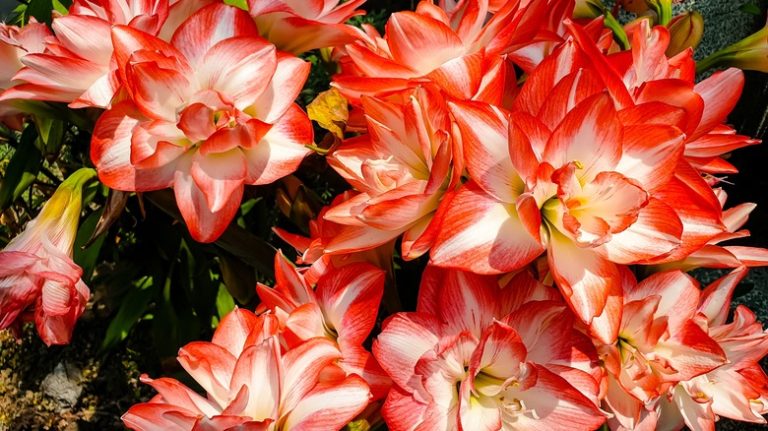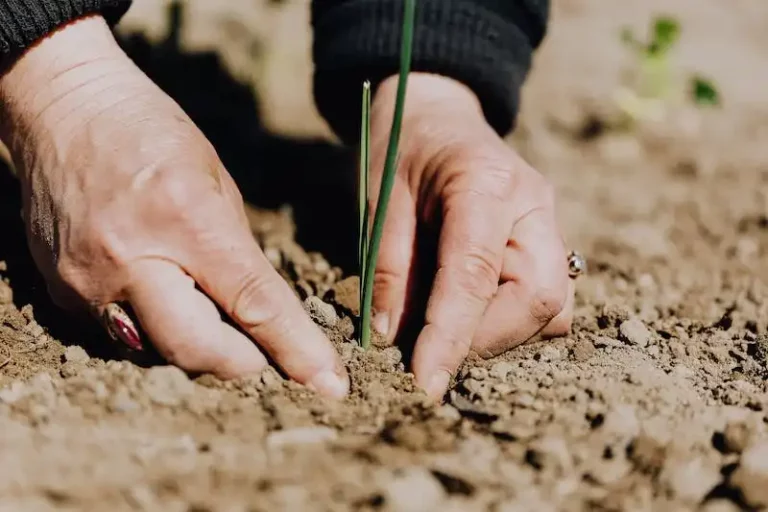White sage, also known as Salvia apiana, is an evergreen perennial plant native to the artemisia family. It is highly regarded for its sacred and medicinal properties, making it popular among various tribal communities. The plant grows to impressive heights and can tolerate dry conditions, making it ideal for locations with frequent rainfall.
The white sage plant has a dusty, silver-white surface that gives it a unique and captivating appearance. Its aromatic leaves are lightly pliable and emit a soothing aroma when gently bumped or brushed. This distinct fragrance has been used for centuries in smudging ceremonies to cleanse spaces and promote positive energy.
When harvesting white sage, it is important to do so respectfully and sustainably. Many commercial markets sell pre-harvested white sage, but it can also be grown and harvested at home. The plant typically produces multiple branches, allowing for regrowth after harvesting.
Proper care is essential to maintain healthy white sage plants. They require a well-drained soil and should be watered only when needed. Overwatering can lead to root rot and other problems. White sage can also be planted in pots and placed outside in the yard or repotted as needed.
White sage plants are relatively pest-resistant, although aphids and mildew can sometimes be a concern. Regularly inspecting the leaves and lightly cleaning the surface can help prevent these issues. If aphids or mildew are present, they can be treated with natural remedies or mild insecticides.
The sacred white sage has a wide range of uses and effects. It has been traditionally used medicinally for its potential healing properties. The plant is also known to attract beneficial insects, including bees, making it a great addition to any apiary or garden. Its seeds can be collected for future planting or sharing with others.
In addition to its spiritual and medicinal uses, white sage can also be used in cooking. When used in small amounts, it adds a unique flavor to various dishes. Its leaves can also be dried and used to make herbal teas. The dried leaves can be stored in a cool and dark place for extended periods.
In conclusion, the white sage plant is a sacred and versatile herb with various benefits. Its impressive height, pliable leaves, and unique aroma make it a beautiful addition to any garden or indoor space. Whether used for spiritual rituals, medicinal purposes, or culinary endeavors, white sage remains a cherished plant within many cultures.
White Sage
White sage (scientific name: Salvia apiana) is a well-known plant in the Californian region. It is a member of the mint family and is native to the foothill areas of Southern California and Baja California. White sage is mostly known for its ceremonial and medicinal properties, making it an important plant in Native American rituals and healing practices.
The leaves of the white sage plant are the most commonly used part, and they are typically harvested in late summer to early fall. The leaves are then dried and used in various ways, such as burning them as smudge sticks or brewing them in teas. Burning white sage is believed to purify the air and clear negative energy, which is why it is commonly used to fumigate living spaces and objects.
White sage plants are relatively easy to care for. They prefer well-draining soil and should be watered sparingly, especially during the winter months when the plant becomes dormant. It is important to note that excessive watering can lead to root rot and mildew, so it is recommended to let the soil dry out between waterings. White sage plants also benefit from regular fertilizing, especially during the growing season.
If you plan on growing white sage, it is advisable to wait until the plant is at least two years old before harvesting any leaves. This allows the plant to establish a strong root system and ensures its continued health and growth. When harvesting, it is important to use a sharp pair of shears or scissors to cut the stems just above a leaf node, as this encourages new growth.
White sage plants can be grown both indoors and outdoors, although they thrive in drier climates with moderate humidity. When transplanting white sage, it is recommended to space the plants at least 3-4 feet apart to allow for proper air circulation.
White sage is frequently celebrated as a companion plant in gardens, as it attracts beneficial insects and repels pests. Its fragrant leaves exude a pleasant aroma when rubbed, and this fragrance is often used in perfumes and aromatherapy blends. Some people also opt to use commercial white sage products, such as smudge sticks or essential oils, for their convenience.
Although white sage has a long history of use in Native American cultures and has gained popularity in alternative healing practices, it is important to approach its use with respect and cultural sensitivity. If you have any questions about white sage or its appropriate use, it is always best to consult a knowledgeable source or do further research.
White sage plant care: Effects of the sacred sage
White sage is a sacred plant with a rich history and many uses. In order to care for your white sage plant and enjoy its benefits, there are some important factors to consider.
Water: White sage requires regular watering, especially during the growing season. However, it is important not to overwater the plant, as this can lead to root rot. Keep the soil lightly moist, allowing the top inch to dry out between waterings.
Sunlight: White sage thrives in full sun, so it is best to place it in a sunny spot in your yard or garden. If you live in a colder climate, you can keep the plant indoors in a location with plenty of sunlight.
Soil: White sage prefers well-draining soil with a pH between 6.0 and 8.0. You can add organic matter or compost to improve the soil’s fertility.
Temperature: White sage is native to California and is adapted to warm climates. It is not frost-tolerant, so if you live in an area with freezing temperatures, it is best to bring the plant indoors or protect it from frost.
Pests and diseases: White sage is generally resilient to pests and diseases. However, it may attract aphids or whiteflies, which can be treated with insecticidal soap. Powdery mildew can also be a problem in humid conditions. Make sure to provide good air circulation to prevent mildew from developing.
Harvesting: If you wish to harvest your white sage for smudging or other uses, it is best to do so in the morning after the dew has dried and before the heat of the day. Cut the stems just above a leaf node, leaving enough growth for the plant to continue thriving.
Storage: To store white sage, hang the harvested stems upside down in a dry, dark, and well-ventilated area. Once dried, you can crumble the leaves and store them in an airtight container for future use.
Companion plants: White sage can be grown alongside other drought-tolerant plants such as lavender, rosemary, and yarrow. These plants can also provide natural pest control and attract beneficial insects to your garden.
Uses: White sage has been used for centuries by Native American tribes, such as the Ohlone people, for medicinal and ceremonial purposes. It is commonly used for smudging, which involves burning the dried leaves to cleanse a space or person of negative energies.
Final thoughts: Growing white sage can be a rewarding experience, whether for its aromatic properties, its cultural significance, or its ability to attract beneficial insects to your garden. By selecting the right seeds or plants, providing proper care, and harvesting at the right time, you can enjoy the benefits of this sacred plant.
White sage origin and properties
The White Sage plant, also known as Salvia apiana, has its origins in the regions inhabited by the Ohlone and other Native American tribes in California. It has been used in Native American rituals and ceremonies for centuries, and its sacred properties are well-known.
White sage is an easy plant to care for, making it a popular choice for both experienced and novice gardeners. It can grow in a variety of soil types, although it prefers well-draining soil. If you are planting white sage from seeds, then please select a sunny location for it to thrive.
In its natural habitat, white sage is typically found growing in the foothills and other dry regions of California. The plant has adapted to harsh conditions, which is why it can tolerate drought and poor soil quality. When grown in a garden or yard, white sage may require occasional watering, especially in hotter and drier climates.
Harvesting white sage is an important component of its care. The leaves are typically harvested before the plant flowers, which usually happens in the spring. The harvested leaves can be hung to dry or used fresh. Traditional methods involve bundling the leaves together and hanging them upside down to dry. The dried leaves can then be burned as incense or used for other purposes.
White sage has a unique aroma that is often described as earthy, sweet, and slightly spicy. When burned, it produces a fragrant smoke that has been used for centuries for smudging and cleansing rituals by Native American tribes. The smoke is believed to cleanse negative energy and promote positive vibes.
Given its popularity, white sage is now sold in various forms, including loose leaves, smudge sticks, and incense cones. It can be found in specialty stores, farmers’ markets, and online. If you’re interested in growing white sage yourself, it is best to start by transplanting a young plant from a reputable nursery or by obtaining seeds.
When growing white sage indoors, it is important to provide it with bright light. Placing it near a south-facing window or using grow lights can help ensure that the plant receives adequate sunlight. In terms of temperature, white sage is frost-tender, so it should not be exposed to freezing temperatures.
To care for your white sage plant, water it when the soil feels dry. Be mindful not to overwater, as white sage is susceptible to root rot and other moisture-related problems. Pruning can also be done to maintain the plant’s size and shape, although it is generally a low-maintenance plant.
White sage has a rich history and is deeply rooted in Native American culture. Its diverse uses and properties make it a valuable addition to any garden or home. Whether you’re interested in its sacred traditions, preventative measures, or simply its unique aroma, white sage is a fascinating plant to explore.




